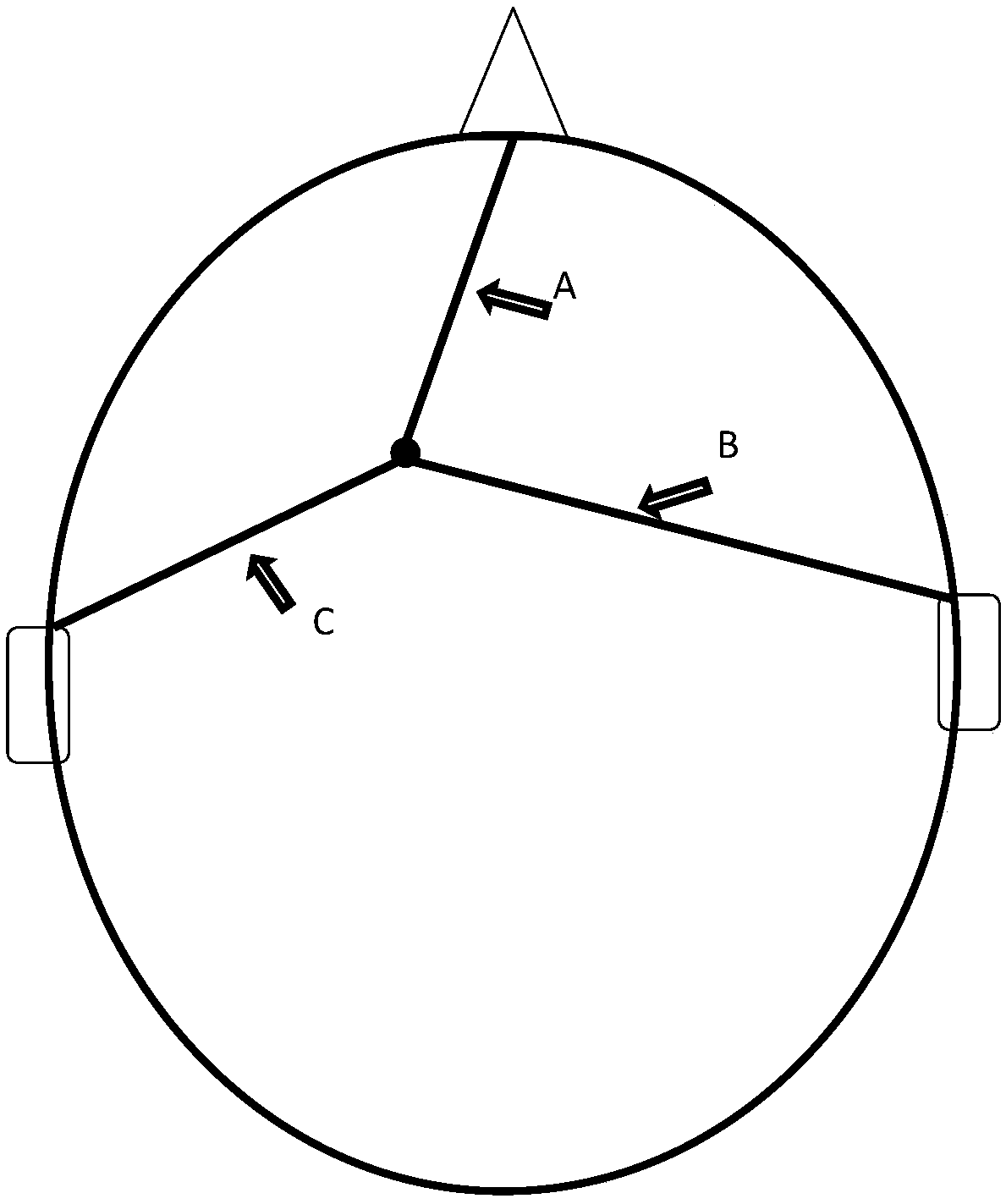Transcranial magnetic stimulation target positioning method
A technology of transcranial magnetic stimulation and positioning method, which is applied in the field of medical detection, can solve the problems of high cost, large floor space, and complicated use of transcranial magnetic stimulation, and achieve the reduction of time and money costs, low requirements for treatment sites, and The effect of cost reduction
- Summary
- Abstract
- Description
- Claims
- Application Information
AI Technical Summary
Problems solved by technology
Method used
Image
Examples
Embodiment 1
[0016] A transcranial magnetic stimulation target positioning method, comprising the following steps:
[0017] (1) Obtain the brain magnetic resonance scan image of the patient;
[0018] (2) Based on the magnetic resonance image, the nearest projection point of the area to be stimulated in the brain in the image is found by calculation, and the nearest projection point is called the scalp target point;
[0019] (3) Based on the magnetic resonance image, calculate the shortest distance between the patient's nasion root, the lowest point of the left and right ears and the scalp target point on the scalp surface in the image, and record them as A, B, and C centimeters respectively;
[0020] (4) Use a soft ruler to draw a circle on the scalp with the root of the nose and the lowest point of the left and right ears as the center, and A, B, and C cm as the radius. The intersection of the three circles is the scalp target point.
[0021] Such as figure 1 As shown, a group of number...
Embodiment 2
[0023] A transcranial magnetic stimulation target positioning method, comprising the following steps:
[0024] (1) Obtain the brain magnetic resonance scan image of the patient;
[0025] (2) Based on the magnetic resonance image, the nearest projection point of the area to be stimulated in the brain in the image is found by calculation, and the nearest projection point is called the scalp target point;
[0026] (3) Based on the magnetic resonance image, calculate the shortest distance between the patient's occipital protuberance, bilateral eye canthus and the scalp target on the scalp surface in the image, and record them as D, E, and F cm respectively;
[0027] (4) Use a soft ruler to draw a circle on the scalp with the center of the occipital prominence and the corners of both eyes, and the radius of D, E, and F centimeters. The intersection of the three circles is the scalp target.
[0028] A set of numbers (D, E, F) formed by the distance from any point on the head to the...
PUM
 Login to View More
Login to View More Abstract
Description
Claims
Application Information
 Login to View More
Login to View More - R&D
- Intellectual Property
- Life Sciences
- Materials
- Tech Scout
- Unparalleled Data Quality
- Higher Quality Content
- 60% Fewer Hallucinations
Browse by: Latest US Patents, China's latest patents, Technical Efficacy Thesaurus, Application Domain, Technology Topic, Popular Technical Reports.
© 2025 PatSnap. All rights reserved.Legal|Privacy policy|Modern Slavery Act Transparency Statement|Sitemap|About US| Contact US: help@patsnap.com

